The Windsors have always exuded an air of mystique, so it's not surprising there are so many wild royal family conspiracy theories out there
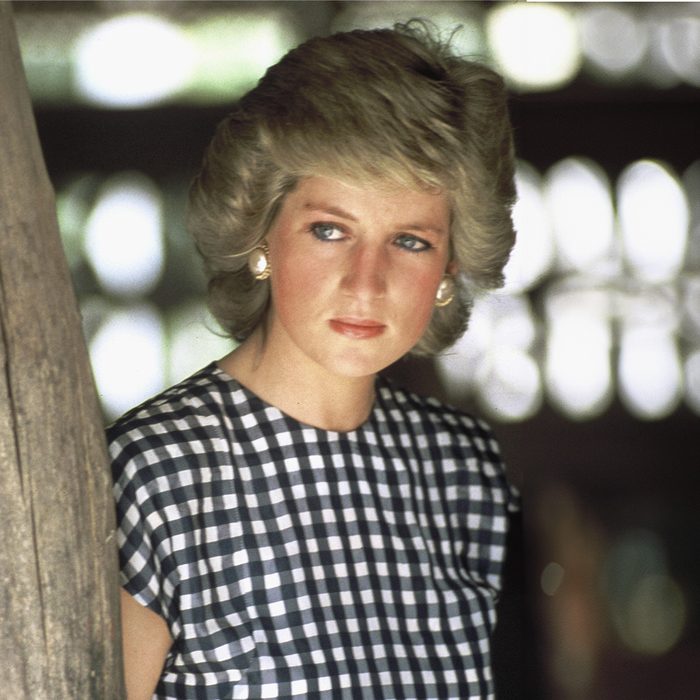
The 18 Craziest Conspiracy Theories About the Royal Family


Queen Elizabeth II was a lizard person
It’s hard to believe anybody really thinks the late Queen Elizabeth II was a lizard masquerading as a human being. But the theory has persisted, even after her death, thanks to social media. Where did this theory originate? “In 1998, the ex-BBC presenter turned New Age philosopher David Icke claimed in a book titled The Biggest Secret that members of the royal family were reptiles with crowns,” McMahon says. Some people have even claimed the royals blink in a “lizard-like manner.”
Since then, “the lizard theory has become bound up with ancient mythologies and science fiction,” he says. “There are different variations, with one being that the royal family are reptilian extraterrestrials from a constellation called Draco.” Stories abound about aliens arriving from other planets to rule our civilization, only reproducing among their own kind. So was the queen reptilian? Not to worry: This one falls squarely in the “fiction” category. Even with our tendency to paint the royals as “others,” they are, in fact, human.

Charles and Diana had a secret daughter
Royal family conspiracy theories have long swirled that Princess Diana (along with other women who married into the family) was subjected to fertility testing to ensure she could produce an heir. But this rumor about Charles and Diana takes it to the next level: Supposedly, Diana had her eggs retrieved and fertilized with Charles’s sperm as part of the testing process. The embryos were then sent to be destroyed—except one wasn’t. A dishonest doctor allegedly transferred it to his wife, who became pregnant and gave birth to the royal couple’s secret daughter, Sarah, in October 1981, eight months before Prince William. Sarah supposedly feared for her life after Diana’s death and fled to the United States. If this sounds like the plot of a novel, that’s because it was. Self-published by writer Nancy E. Ryan in 2011, The Disappearance of Olivia is the fictional story of a woman who goes into hiding after finding out she’s Princess Diana’s secret daughter.
In some ways, this story isn’t too far-fetched. “Given the dynastic nature of the royal family, a story like this is almost bound to arise,” McMahon says. “We know that the ancestors of King Charles were fixated on the importance of having a healthy heir. To what lengths might the royals go to ensure this happens?” Plus, the uncertainty that comes with new scientific advances such as IVF often produces “what if” stories. But there’s no basis in truth for Sarah’s existence—and even if there were, she wouldn’t challenge William’s position as heir to the throne. The 2013 Succession to the Crown Act, which gave future firstborn daughters and sons the right to the throne, applies only to those born after 2011.

The royal family killed Diana
Although Diana has been dead for more than 30 years, people are still fascinated by her. It seems hard to believe that such a larger-than-life figure could have been killed in something as mundane as a car accident, so numerous conspiracy theories surrounding Diana’s death in 1997 have cropped up. The most insidious of these is that the royal family had her killed, a rumor propagated by Mohammed Al Fayed, the father of Diana’s boyfriend, Dodi Al Fayed, who was also killed in the crash. The elder Al Fayed claimed the royal family, specifically Prince Philip, did not want Diana to marry a Muslim—however, that motive for murder seems quite thin, as she was already divorced from Charles.
In 2004, the British Metropolitan Police began Operation Paget, an inquiry into the deaths of Diana and Dodi. The investigators looked into reports that Diana had previously been concerned about an accident with her car, but found no evidence of wrongdoing. This was still not good enough for Mohammed, who claimed it was a cover-up. “Conspiracy theories swirl around famous people,” says royal historian Marlene Koenig, author of Queen Victoria’s Descendants. “You can stand on your head with facts, and [conspiracy theorists] won’t believe you.”
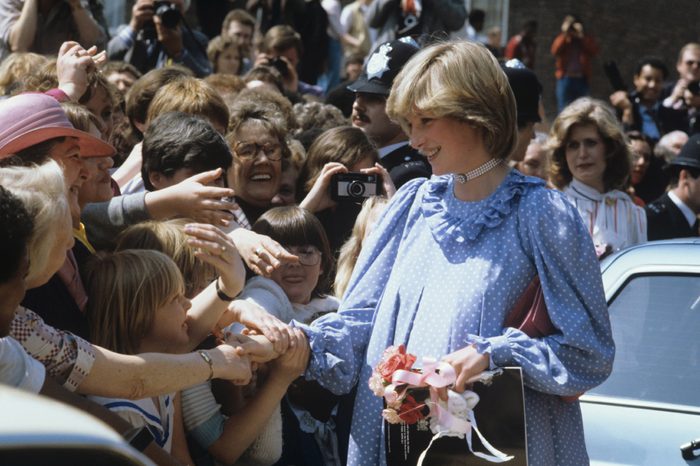
Diana was pregnant with another baby
Another supposed reason to have the princess killed was that she was pregnant with Dodi’s child, and the royal family couldn’t bear for the heir to the throne to have a Muslim half-sibling. Again, this motive seems thin, and Mohammed Al Fayed was again behind the spread of this piece of gossip. But was Diana pregnant when she died?
Before their deaths, Diana and Dodi visited the Villa Windsor in France, the home of the Duke and Duchess of Windsor (aka Wallis Simpson and abdicated King Edward), which Mohammed had bought. “He made staff tell the media that Dodi and Diana were visiting the place to look at rooms ‘for the baby,'” Koenig says. “He claimed Diana was pregnant when she died. It was a total ruse, but the push of this statement caught on with people who fall for conspiracy theories. One major problem: The story was unfounded.” A security guard revealed the villa story to be fiction—the couple had visited, but not for the reason Al Fayed said. Plus, Operation Paget found no evidence, medical or otherwise, that Diana was pregnant.

Meghan Markle used a surrogate
The abundance of rumors around female royals’ pregnancies is evidence of a society that’s still misogynistic. Even as recently as June 2025, when Meghan Markle posted a throwback video of herself while pregnant and dancing to induce labor, rumors that her bump was “fake” and that she used a surrogate immediately flourished. In addition, “exposing her pregnant tummy for a photo was construed as proof that she was not actually pregnant: The logic was that a royal would never agree to such a stark image, and therefore she was not with child,” McMahon says. To top it off, “her elegance and composure during the pregnancy was seen as suspicious.”
But there are even more sinister reasons for questioning Meghan’s pregnancies, McMahon says. “Meghan’s racial identity has undoubtedly been weaponized by those who dislike the idea of somebody in the line of succession being from a mixed race or ethnic minority background,” he says. “Is surrogacy being used to undermine the right of her children to ever be considered as potential monarchs?” The issue of surrogacy is not specifically addressed by royal rules, but it could be used as a way for some conspiracy theorists to express their dislike—or even racist views—toward Meghan by illegitimizing her children.

Kate Middleton had a body double
Nothing fills a vacuum like speculation and gossip. When Kate Middleton did not appear in public for several months at the beginning of 2024, rumors swirled that something had happened to her. As reports of her being “spotted” started rolling in, the story spread that the mystery woman was really a body double of the princess.
“On various social media channels, it was alleged that paparazzi photos of Kate with William were of a body double. What happened with this story reflects a very modern trend for people on social media with no knowledge of the royal family, or expertise in photography, setting themselves up as experts,” McMahon says. “Some of this activity may have been malicious, but it was mostly the kind of attention-seeking that has become endemic among social media influencers.” Kate’s admission that she had doctored a family photo taken for Mother’s Day didn’t help the situation. The rumors were put to rest when Kate revealed the truth: She was being treated for cancer.
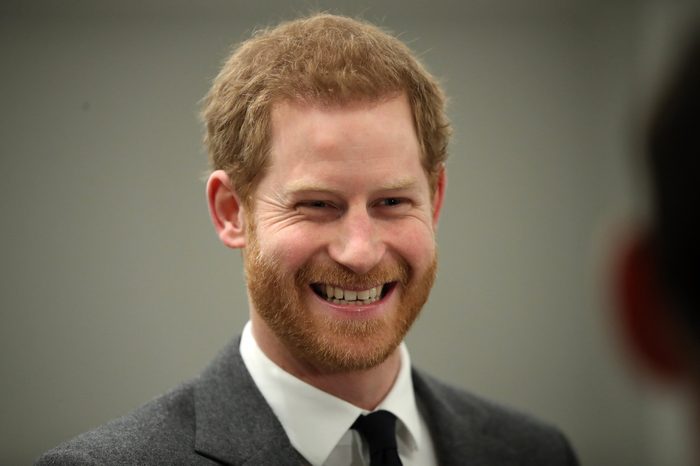
Prince Harry isn’t Charles’s son
This long-standing rumor is based on one main (or mane?) thing: red hair. The similar hue of Prince Harry and James Hewitt, with whom Harry’s mother, Diana, had an affair, has led to speculation that Harry is Hewitt’s son, not Charles’s. In addition, “conspiracy theorists have alighted on his facial features being very different from William, who has the classic Hanoverian jawline,” McMahon says.
Aside from the fact that the timing doesn’t work (Harry was born two years before Diana’s affair began), McMahon says royal insiders have long rejected this made-up story. But among the public, “the story has endured because of Harry’s much-publicized relationship breakdown with his father—in his biography, Spare, Harry claimed that Charles even made jokes about his parentage, clearly aware of the Hewitt stories,” he says. “But Harry’s remarkable public irritation at [being the ‘spare’] has led wagging tongues to wonder if there is more going on here. There is not. He just finds his accident of birth hard to handle.”

Princess Margaret had a love child
Yet another conspiracy theory on our list relating to female royals’ bodies and their pregnancies is the “love child” story about Princess Margaret, the bad-girl princess and sister of Queen Elizabeth II. Margaret had already been the subject of several royal family scandals. “In contrast to Elizabeth, she enjoyed late-night parties and a hedonistic lifestyle,” McMahon says. “It’s not beyond the realm of possibility that the claim she had a son out of wedlock is true. After all, siring illegitimate children is a centuries-old royal tradition.”
In 2014, 58-year-old Robert Brown won a court case to see the contents of Margaret’s will, believing he was her son who had been brought up in Kenya by adoptive parents—unfortunately, the will didn’t mention him. “Brown alleged that Margaret’s pregnancy was hidden from public view by using body doubles,” McMahon says. “While he was condemned as a ‘fantasist,’ this conspiracy theory is not so far-fetched. Princess Margaret had several lovers, and her private life was a gift to the tabloid press. However, the story has yet to be definitively confirmed.”
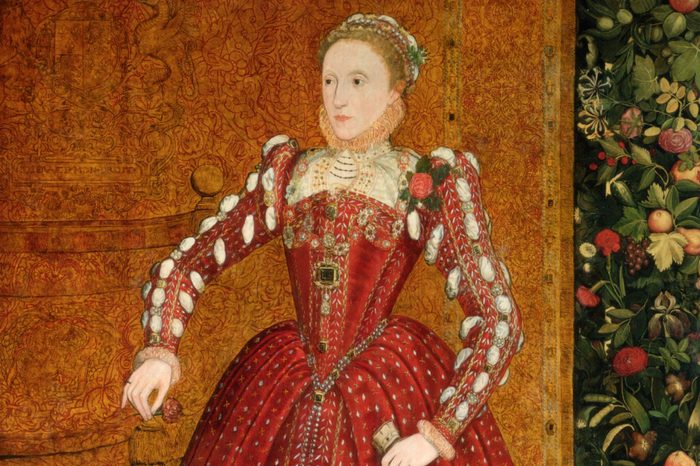
Queen Elizabeth I was a man
Throughout history, our patriarchal society has always resisted the idea of a woman in power, including the first Queen Elizabeth, who ruled England from 1558 to 1603. The “virgin queen” never married, lest her husband take that power from her, but the public of the time considered it “unwomanly” to avoid having children, let alone to become one of the country’s most effective leaders ever. Thus, the story that she wasn’t a woman at all emerged. The public was reminded of this idea when Dracula author Bram Stoker embellished the story in his 1910 book Famous Imposters. Supposedly, the young Princess Elizabeth was sent to the country to avoid the plague, where she died and was replaced with a farm lad now known as the “Bisley Boy.”
“There is no evidence that Queen Elizabeth I was a man, but Queen Elizabeth I, like Joan of Arc, was subject to such speculation by those who did not believe a woman could exert strong political or military leadership,” says Nicoletta Gullace, PhD, an associate professor of history at the University of New Hampshire. Not only is there no evidence of the events of this story, but it would have been nearly impossible to keep such a huge secret at the time, given the number of Elizabeth’s attendants and dressers.

Richard I and French King Philip II were lovers
King Richard I of England, also called Richard the Lionheart, who ruled from 1189 to 1199, was said to have had a close relationship with the French King Philip II. But how close? The story that they were lovers originates from several historical sources, including 12th-century chronicler Roger of Howden, who wrote that the two had a strong attachment and that “at night the bed did not separate them.”
That’s not evidence in itself, as customs around sleeping arrangements were different in medieval times. In addition, however, Richard did not have any children with his wife. “There were likely other gay royals; nevertheless, even if a king or queen was gay, they would have been expected to marry and produce legitimate heirs,” Gullace says. This is one theory that remains a “maybe.”

Two medieval princes were murdered
One of the most famous unsolved royal family mysteries is what happened to the “Princes in the Tower,” two brothers, including the heir to the throne, who seemingly vanished in 1483. They were imprisoned in the Tower of London by their uncle, who became Richard III when he usurped the throne after the death of the boys’ father, Henry IV. Young Edward (briefly King Edward V) and his brother, also called Richard, were never seen again.
Two hundred years later, in 1674, bones from two children were found under a staircase in the White Tower at the Tower of London, and they were presumed to be the murdered princes. “Later commentators speculated that Richard III may have been responsible for their death,” Gullace says. “This is all speculation, however, and no one knows definitively what happened to the Princes in the Tower.” In May 2025, another clue lending support for the theory surfaced: A necklace belonging to Edward V was bequeathed in a recently discovered 1516 will. Suspiciously, the will belonged to a family member of a royal official who was reported to have had a hand in the murders. How did they end up with the necklace, unless something nefarious had happened? This is one of the royal family conspiracy theories that could actually be true.

King George III was “mad”
The “madness of King George” is legendary: The Regency period of the early 19th century, during which Queen Charlotte ruled in place of her incapacitated husband and young son, is the stuff of Jane Austen novels and Netflix’s Bridgerton series. Mad King George himself even appears in the Broadway show Hamilton. But what exactly was wrong with George, and why does his condition continue to capture the public’s imagination?
“Yes, King George III appears to have had periodic bouts of madness,” Gullace says. “Historians disagree on the exact nature of his mental illness, but one theory is that it was a blood disease called porphyria, which can cause symptoms similar to what George manifested.”
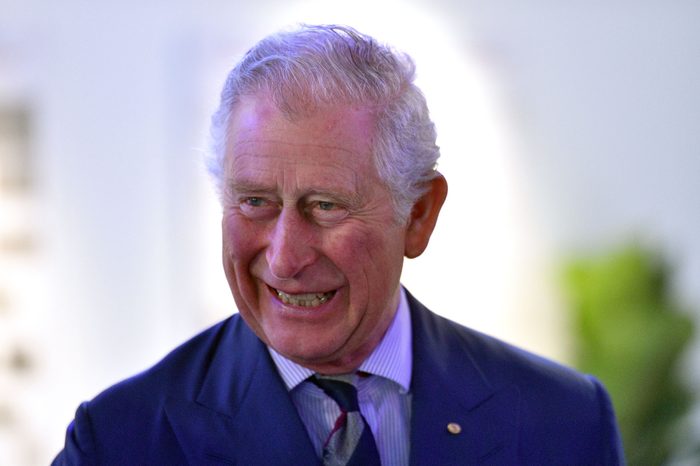
King Charles is a vampire
We started with lizard people, so it’s only fitting that we end our look at royal family conspiracy theories with vampires. “King Charles III pointed out that he was descended from Vlad the Impaler, the bloodthirsty medieval prince who became the inspiration for the fictional vampire Dracula,” McMahon says. “In 1998, he visited the castle of Vlad the Impaler in Transylvania. Charles even joked in one interview that he had ‘a stake in the country.'”
However, this link to Vlad (through Charles’s great-grandmother, Queen Mary, wife of George V) led to some conspiracy theories, fueled by the real-life prevalence of the iron-deficiency blood disorder porphyria in the royal family’s genes—the same thing “mad” King George may have suffered from. “Porphyria also causes sensitivity to sunlight, receding gums that create the impression of fangs and dark red urine that might create the impression that the sufferer is drinking blood,” McMahon says. “The logic goes that the royals need other people’s blood to tackle this inherited disease. Charles does nothing of the sort, and there is no evidence that he engages in any bloodsucking.” Well, that’s a relief!
About the experts
|
Why trust us
Reader’s Digest has published hundreds of stories on the British royal family, providing a behind-the-scenes look at the fascinating facets of the monarchy. We regularly cover topics including the latest royal news, the history and meaning behind time-honored traditions, and the everyday quirks of everyone’s favorite family members, from Queen Elizabeth’s daily snack to Prince William’s confessions about his home life. We’re committed to producing high-quality content by writers with expertise and experience in their field in consultation with relevant, qualified experts. We rely on reputable primary sources, including government and professional organizations and academic institutions as well as our writers’ personal experiences where appropriate. We verify all facts and data, back them with credible sourcing and revisit them over time to ensure they remain accurate and up to date. Read more about our team, our contributors and our editorial policies.
Sources:
- Nicoletta Gullace, PhD, associate professor of history at the University of New Hampshire; email interview, June 2025
- Marlene Koenig, royal historian; email interview, June 2025
- Tony McMahon, investigative historian; email interview, June 2025
- Metropolitan Police: “The Operation Paget inquiry report into the allegation of conspiracy to murder”
- BBC: “How Kate body-double conspiracy theory spread on social media”
- The Guardian: “Why Richard I shared his bed with the king of France”
- Westminster Abbey: “Edward V and Richard, Duke of York”
- The National Archives: “Extraordinary new clue about the Princes in the Tower found at The National Archives”
- Historic Royal Palaces: “Charles II and the Discovery of the Princes in the Tower” in 1674
- Official Website of the Royal Family: “Ten things you didn’t know about George III”
- Official Website of the Royal Family: “Succession”
- Open Library of Humanities Journal: “Richard the Lionheart, Contested Queerness, and Crusading Memory”



















